
Burning Man is a week-long large-scale desert event focused on "community, art, self-expression, and self-reliance" held annually in the western United States. The event's name comes from its culminating ceremony: the symbolic burning of a large wooden effigy, referred to as the Man, that occurs on the penultimate night, the Saturday evening before Labor Day. Since 1990, the event has been at Black Rock City in northwestern Nevada, a temporary city erected in the Black Rock Desert about 100 miles (160 km) north-northeast of Reno. According to Burning Man co-founder Larry Harvey in 2004, the event is guided by ten stated principles: radical inclusion, gifting, decommodification, radical self-reliance, radical self-expression, communal effort, civic responsibility, leaving no trace, participation, and immediacy.

Marjory Stoneman Douglas was an American journalist, author, women's suffrage advocate, and conservationist known for her staunch defense of the Everglades against efforts to drain it and reclaim land for development. Moving to Miami as a young woman to work for The Miami Herald, she became a freelance writer, producing over one hundred short stories that were published in popular magazines. Her most influential work was the book The Everglades: River of Grass (1947), which redefined the popular conception of the Everglades as a treasured river instead of a worthless swamp. Its impact has been compared to that of Rachel Carson's influential book Silent Spring (1962). Her books, stories, and journalism career brought her influence in Miami, enabling her to advance her causes.

Survival Research Laboratories (SRL) is an American performance art group that pioneered the genre of large-scale machine performance. Founded in 1978 by Mark Pauline in San Francisco, the group is known in particular for their performances where custom-built machines, often robotic, compete to destroy each other. The performances, described by one critic as "noisy, violent and destructive", are noted for the visual and aural cacophony created by the often dangerous interactions of the machinery. SRL's work is also related to process art and generative art.

Alexander Stirling Calder was an American sculptor and teacher. He was the son of sculptor Alexander Milne Calder and the father of sculptor Alexander (Sandy) Calder. His best-known works are George Washington as President on the Washington Square Arch in New York City, the Swann Memorial Fountain in Philadelphia, and the Leif Eriksson Memorial in Reykjavík, Iceland.
Thomas Barbour Lathrop was an American philanthropist and world traveler.

Marjory Stoneman Douglas High School was a public high school in Parkland, Florida, United States. Established in 1990 as part of the Broward County Public Schools district and named after the writer Marjory Stoneman Douglas, it was the only public high school in Parkland, serving almost the entire city as well as a small section of neighboring Coral Springs.
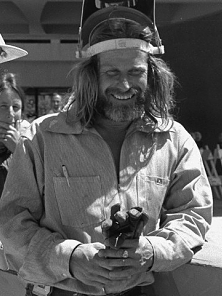
Marco Polo di Suvero, better known as Mark di Suvero, is an abstract expressionist sculptor and 2010 National Medal of Arts recipient.

Flaming Lotus Girls is a volunteer-based group of artists who make large-scale kinetic fire art. FLG has been described as a "women-focused anarchist art collective." The group began in 2000, in San Francisco, California, as a group of six women and two men who wanted to gain the fabrication and design experience needed to create large sculptural installations. The group includes over a hundred members of all genders, and a majority of the members are women. Many of the sculptures have interactive elements, allowing the audience to control the lighting, flames, sound, or other effects. The collective's work has appeared throughout the United States, as well as in Canada, Australia, and the Netherlands.
Michael John Caruso is an American former Major League Baseball shortstop who played for the Chicago White Sox and Kansas City Royals.

AfrikaBurn is an official Burning Man regional event, held at Quaggafontein in the Tankwa Karoo, in the Western Cape Province of South Africa. It is centered on the building of a temporary creative community in a semi-desert environment, involving ephemeral artworks, some of which are burnt towards the end of the event. Many attendees wear elaborate costumes and some create decorated "mutant vehicles". These mobile art cars are officially called Desert Mutant Vehicles.
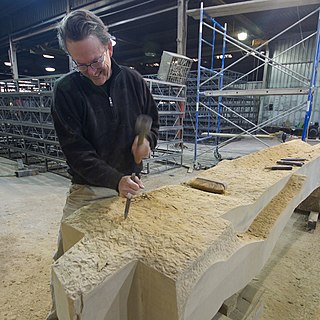
Richard Rhodes is an American sculptor, stonemason, entrepreneur, and scholar of stonework worldwide.
Guy Overfelt is an American multi-disciplinary post-conceptual artist. He works with various media including sculpture, performance, photography, video and drawing. He is based in San Francisco and Bolinas, California.
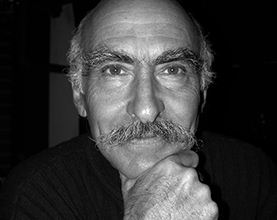
Pepe Ozan (1939–2013) was an Argentine sculptor, artistic director, and filmmaker. He lived in the San Francisco Bay Area for many years, and is known for his lasting influence at Burning Man, an annual experimental arts festival in Nevada, United States.
Mark Grieve is an American contemporary artist. He practices in a variety of media including found objects and large metal sculpture as well as site-specific installations, performance, and public art.
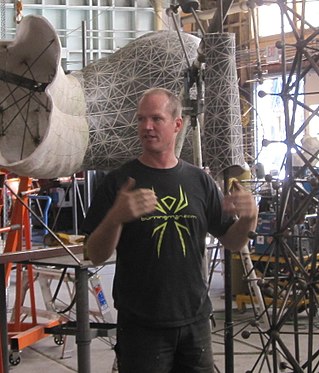
Marco Cochrane is an American sculptor born in Venice, Italy, best known for his large-scale steel sculptures of nude women.

The Parkland high school shooting was a mass shooting that occurred on February 14, 2018, when 19-year-old Nikolas Cruz opened fire on students and staff at Marjory Stoneman Douglas High School in the Miami metropolitan area city of Parkland, Florida, killing 17 people and injuring 17 others. Cruz, a former student at the school, fled the scene on foot by blending in with other students and was arrested without incident approximately one hour and twenty minutes later in nearby Coral Springs. Police and prosecutors investigated "a pattern of disciplinary issues and unnerving behavior".

X González is an American activist and advocate for gun control. In 2018, they survived the Stoneman Douglas High School shooting, the deadliest high school shooting in U.S. history, and, in response, co-founded the gun-control advocacy group Never Again MSD.

Kyle Kashuv is an American conservative activist. He survived the 2018 Stoneman Douglas High School shooting and subsequently advocated for gun rights, notably in opposition to his fellow survivors' March for Our Lives movement.

The Raygun Gothic Rocketship is a retro-futurist art sculpture in the shape of a giant rocketship. It was created by Bay Area artists Nathaniel Taylor, Sean Orlando, and David Shulman.
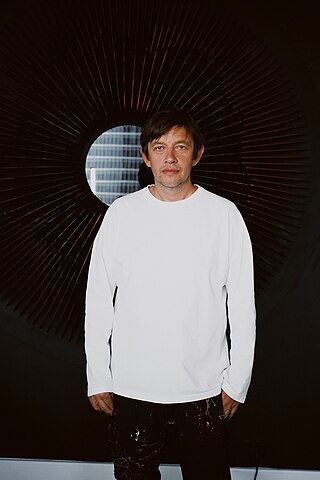
Vasily Klyukin is a Russian-born, Monaco-based visual artist, sculptor and architect.















